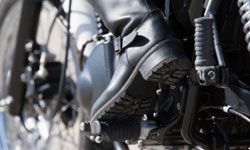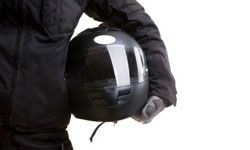How safe are you on your motorcycle? 2006 statistics from the U.S. National Highway Traffic Safety Administration show that about 13 of every 100,000 cars were involved in fatal crashes that year. For motorcycles, the number was more than 72 per 100,000. The fact that driving a motorcycle is more dangerous than driving a car is no news flash.
What is newsworthy, however, is that increasingly, motorcycle riders can do something about the dangers they face.
Advertisement
High-tech body armor -- and the willingness to wear it -- can dramatically lower the risk of injury and death from a motorcycle crash. Keep reading to learn about the gear that can help keep you safe.





